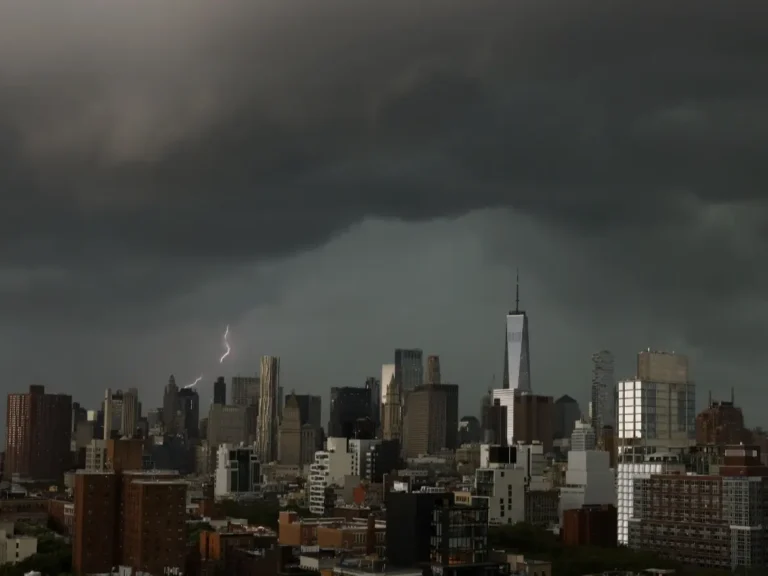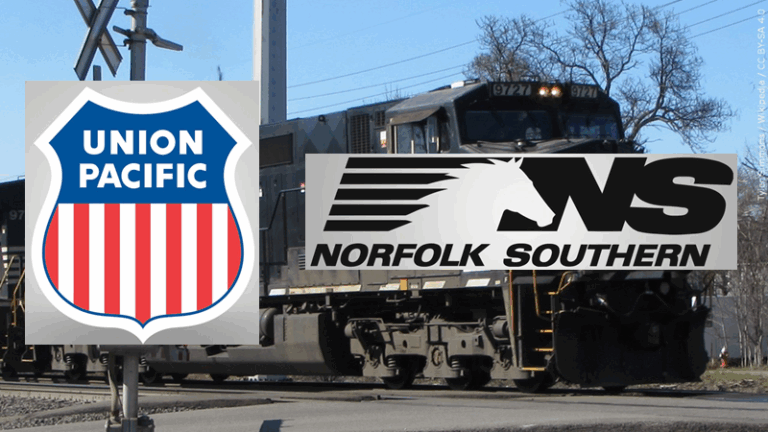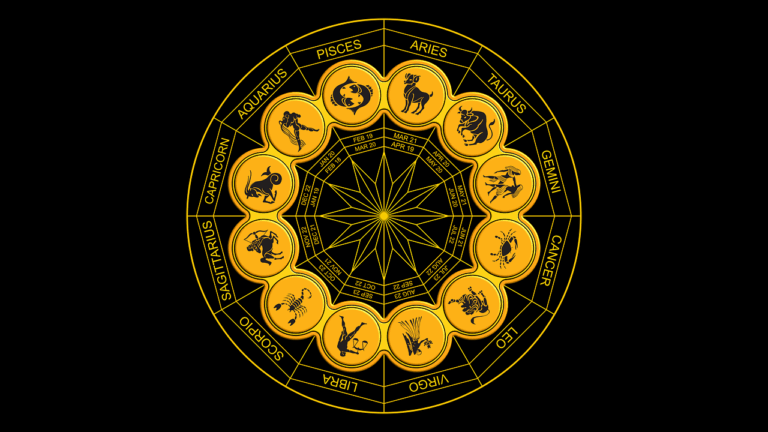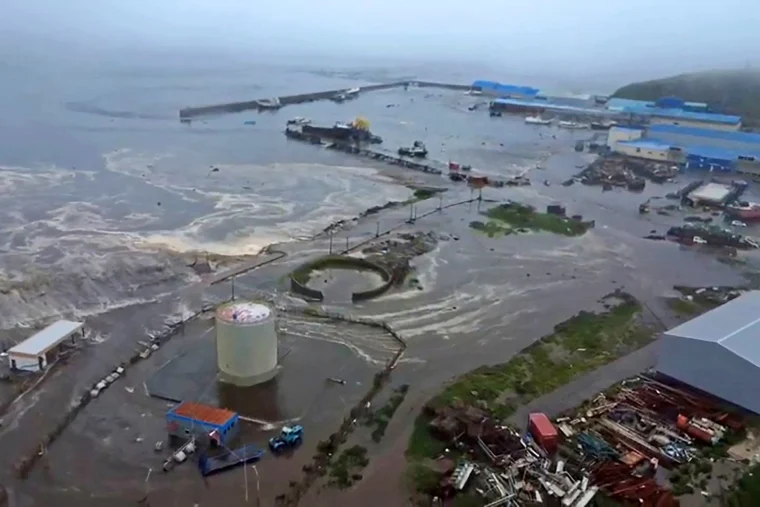
Pic Credits - NBC
On July 29–30, 2025, a massive magnitude 8.8 earthquake struck off Russia’s Kamchatka Peninsula, triggering tsunami warnings across the Pacific, including the United States—particularly Hawaii, Alaska, and the West Coast from California to Washington.
Alert levels & wave forecasts:
- The U.S. Tsunami Warning Center issued warnings for Seattle, San Francisco, Los Angeles, San Diego, Portland, Astoria, and others, with anticipated wave arrival times between roughly 11:20 p.m. to 1:05 a.m. PT.
- Predicted wave heights of up to 3 meters (10 feet) raised concerns of multiple hazardous waves, not just the first.
Actual impacts:
- Hawaii experienced waves up to 1.74 meters, prompting evacuations of coastal areas and disruption at airports on Maui and the Big Island.
- California’s coastline saw modest waves reach beaches with no reported structural damage, although beaches and marinas were closed and advisories remained in effect.
- Alaska—home to the Aleutian subduction zone—was placed on full tsunami warning, with targeted evacuations in places such as Attu, Shemya, and Adak, and forecasts of wave arrivals in afternoon AKDT.
Authorities urged coastal residents to evacuate immediately, avoid waterfronts, and seek high ground. Emergency messaging emphasized that initial calm seas could precede powerful waves and that later tsunami waves might be even more destructive.
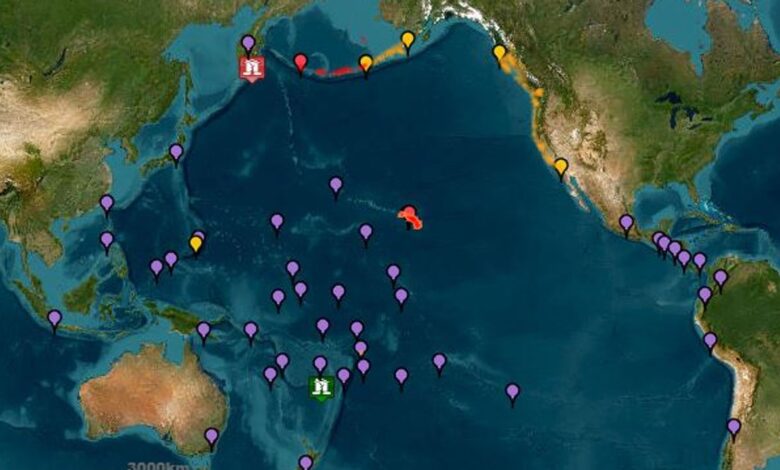
Disaster Impacts in Japan
In Japan, the Japan Meteorological Agency (JMA) responded swiftly, issuing tsunami advisories and evacuation orders for nearly 2 million people along the Pacific coast—from Hokkaido down to Kyushu.
Wave observations:
- The first tsunami wave reached Nemuro (Hokkaido) with a height of 30 cm, while stronger readings—from 40 to 50 cm—were recorded at multiple locations including Ishinomaki port.
- Additional alerts covered eastern Honshu and southern Kyushu, though wave heights remained mostly under 1 meter.
Precautionary measures:
- Operators at the Fukushima Daiichi nuclear plant evacuated as a safety precaution, although no abnormal conditions were reported.
- Disaster response teams, including an emergency government liaison, coordinated mass evacuations and monitoring across 112 cities and towns.
Outcomes:
- Despite widespread alerts and the scale of evacuations, no fatalities were reported. Japan’s efficient early warning networks and public compliance significantly mitigated harm.
Tsunami Impact in Russia
Russia’s Far East—especially the Kamchatka Peninsula and Kuril Islands—bore the most intense immediate effects of the tsunami triggered by the earthquake.
Local damage & wave reach:
- Tsunami waves reached heights of 3 to 4 meters (10–13 ft) in coastal zones like Severo‑Kurilsk, inundating low-lying areas. Residents were evacuated from multiple districts including the Yelizovsky and Severo‑Kurilsky districts, as a state of emergency was declared.
- A kindergarten in Petropavlovsk-Kamchatsky sustained structural damage; power and communication outages were reported.
Response measures:
- Local authorities ordered evacuations of approximately 2,700 people from the Kuril Islands, urging coastal residents to move inland immediately.
- Aftershocks as strong as 6.9 further added to the risk, prompting heightened alertness and monitoring by regional emergency agencies.
Though the waves caused tangible damage, no fatalities were officially confirmed, highlighting the value of quick government response and emergency protocols.
Why the Tsunami Threat Was So Broad
The earthquake’s magnitude of 8.8, shallow depth (~19 km), and proximity—119–136 km off Petropavlovsk‑Kamchatsky—caused rapid, forceful displacement of seawater across the Pacific Basin, prompting global alerts.
This event was the strongest earthquake in the region since the 1952 Severo‑Kurilsk quake, which produced an 18 m tsunami and killed over 2,300 people in Russia.
Key Lessons & Takeaways
- A single offshore megathrust earthquake can generate tsunami waves that cross entire oceans, challenging even distant coastlines.
- Early warning systems, including seismic sensors, satellite-linked buoy networks, and public alert mechanisms, were central to preventing loss of life across all regions.
- Evacuation readiness, public compliance, and international coordination (via organizations like the Pacific Tsunami Warning System) demonstrated their value in crisis mitigation.
- Even without physical damage or casualties in Japan and the U.S., the event underscores the urgent need for sustained preparedness—especially in regions along the Pacific “Ring of Fire”.
Final Thoughts
This July 2025 event highlighted how a powerful tsunami triggered by a massive quake off Russia’s coast can ripple across continents. While disaster impact was localized—with Russia experiencing the most severe flooding and structural damage, and Japan and the U.S. responding proactively with minimal harm—the scale of potential devastation remains a stark reminder of nature’s force.
Communities connected by oceans must continue to invest in resilient infrastructure, maintain robust warnings, and practise disciplined evacuation behaviors. The Tsunami threat is real—but preventable losses are within reach if planning stays sharp.
Read more here

